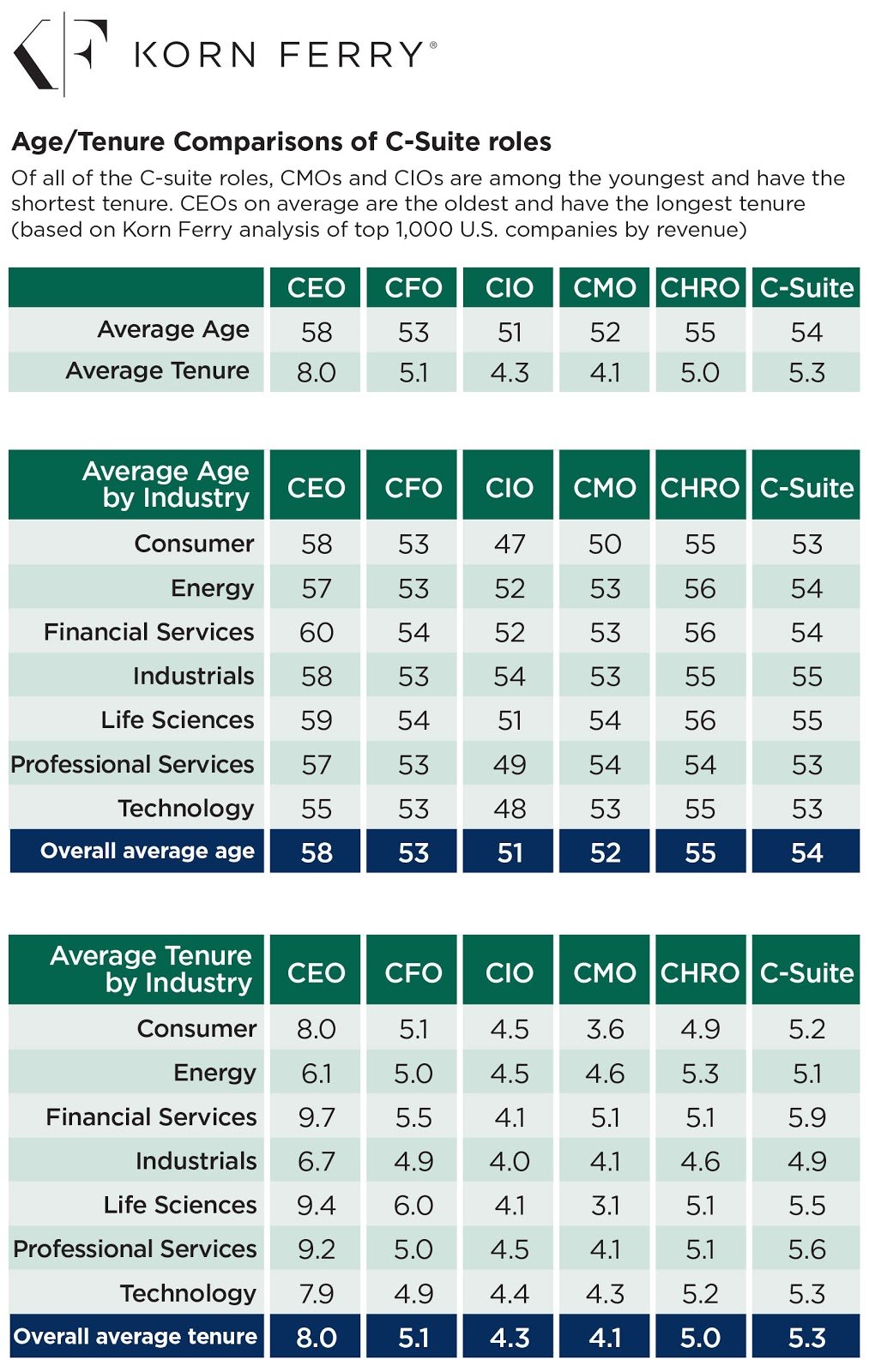Digital Marketing Strategy’s Internal Impact
What’s your strategy behind the digital marketing strategy? Every marketer is messaging to multiple audiences at once: your buyers, of course…but...
4 min read
![]() Rogue Marketing
Sep 13, 2018 2:35:46 AM
Rogue Marketing
Sep 13, 2018 2:35:46 AM
Have you noticed the average tenure of a CMO these days? Most research says CMOs only stick around an average 4.1 years…that’s half the tenure of the CEO and the lowest of the entire C Suite. Harvard Business Review also reports that 57% of CMOs have been in their position three years or less.
What’s happening?
A Culture of “What Did You Do for Me Today?”
Fifteen years ago, organizations had a stable of incredibly smart and sophisticated marketing executives with tenures of 5-10+ years. They had proved their mettle over years of rising through the ranks.

Fast forward to today, and the same individuals are jumping (or being removed) every 2 to 4 years, with lateral or even downward position movement. The environment at each new “gig” (can they be called “careers” with this much movement?) is always one of “What have you done for me lately?”
What gives? How can someone be the smartest person in the room during the morning and the most incompetent that afternoon?
Is the person the problem? The company? Culture? Are marketing executives over promising? Are they being positioned as the silver bullet? Or is it all of this, wrapped into massive search of an elusive unicorn CMO?
A few years ago, Rogue wrote an article about the unfair expectations of today’s CMO: “Dear CMO, It’s Not Your Fault.” In the article, we spoke about a personal Rogue Marketing friend who sat in the CMO seat for a restaurant brand. In this instance, they were responsible for leading the company’s digital transformation—a monumental task that has led to an entire service industry built to facilitate the process. But because this CMO happened to be in the restaurant industry, he/she was also responsible for picking the napkin thread count for a new store opening in Ohio.
Welcome to the dual-and-impossible role of the CMO in the modern digital economy.
“Is the person the problem?
Are executives over promising?
Being positioned as the silver bullet?
Is it all of this??”
Why are CMOs being thrown into this continual cycle?
It turns out that today’s CEOs are acting more like general managers of sports teams and less like visionary owners, because they’re more concerned with winning a championship today than with building a dynasty.
What looks like organizational forward progress is actually instability. The public sees these CEOs bring on new CMOs with “strong creative vision” and “new direction”, like an NFL team excited about a new quarterback. But within a year, they’re gone—Veeam’s CMO was on the job just 9 months, and in her 20-year career has held the position of CMO at IT heavyweights Riverbed, Polycom, VMware and Citrix; Uber’s chief brand officer is out after one year; and more.
Research from the Fournaise Marketing Group says:
“80% of CEOs don’t trust or are unimpressed with their CMOs. (In comparison, just 10% of the same CEOs feel that way about their CFOs and CIOs.) CMOs also sense a serious problem. In our own surveys, 74% of them say they believe their jobs don’t allow them to maximize their impact on the business.”
In this environment, CEOs are charting a course of “next person up” instead of developing a true, long-term leader. If the latest marketing executive can’t develop and execute a digital transformation or increase revenue by 19% within two-years (to say that another way, just 700 days), there’s always someone else in line.
Capabilities, Expectations, and the Reality of Digital Clashing Head-On
What’s happening? A CMO that had recently departed a large retailer told Harvard Business Review (under anonymity) that the problem “wasn’t that his skills prevented him from meeting the company’s goals; it was that the job was so poorly designed—and there was such a mismatch between the CMO’s authority and the CEO’s expectations—that it would be difficult for anyone to succeed in it.”
 CEOs tend to have a few common reactions to the ups and downs of marketing in the digital age when success requires patience instead of the overnight success we’ve come to admire—and, to be self-aware, fantasize. These reactions might include:
CEOs tend to have a few common reactions to the ups and downs of marketing in the digital age when success requires patience instead of the overnight success we’ve come to admire—and, to be self-aware, fantasize. These reactions might include:
Where Do We Go From Here
Moving forward, it’s clear that to drive drive growth, top executives and marketers must rethink how they build their marketing organizations. More than ever, CMOs are feeling the pressure to drive innovation and make it work.
The 5th Annual CMO Innovation Trends Study showed several key insights specific to CMOs and the challenges they face:
But the clearest truth in the report was this: “The lack of alignment, coupled with the exponential growth in digital marketing solutions and services, continue to haunt CMOs in their quest to demonstrate value.”
Year after year, CMOs continually report the same key obstacles to innovation and growth; lack of funding; lack of internal alignment; and daily firefighting.
For 2019, it’s important that company executives and marketing leaders initiate the following strategies:
Today’s business needs strong marketers more than ever it has before.
How will you demonstrate value and keep the CMO revolving door from spinning?

What’s your strategy behind the digital marketing strategy? Every marketer is messaging to multiple audiences at once: your buyers, of course…but...

It’s mid-February… and love is on the brain.

The field of marketing is a practice, though it is not treated like other professional services. But it should be.